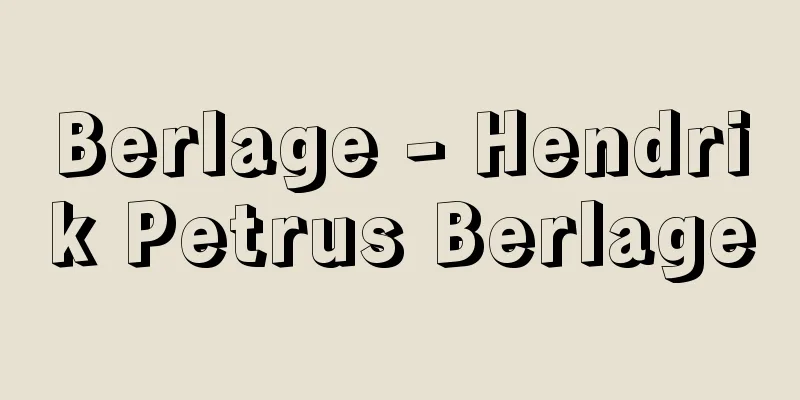Kyoto ware

|
A general term for ceramics from early modern Kyoto, from the Momoyama to Edo periods. Kyoto had been the capital for a long time since the Heian period, and initially had green-glazed kilns, but there was a complete lack of production in the Middle Ages, and kiln construction was only active in the early modern period. The pioneer of this was Raku ware by Raku Chojiro, who was supervised by Sen no Rikyu, and in 1586 (Tensho 14) he completed the Soeki style black Raku and red Raku tea bowls. Raku ware was a new innovation that introduced the lead glaze technique of Kochi ware (a type of sansai) from the Ming and Song dynasties in China, and the kilns were small in size because they used low-temperature lead glaze, and were called inner kilns because they were built indoors. In contrast, long kilns built on slopes were called honyaki, and in the Edo period, Kiyomizu ware, Seikanji ware, Awata ware, Mizorogaike ware, Yasaka ware, Otowa ware, Shugakuin ware, and other types of ware were produced mainly in the foothills of Kyoto's Higashiyama area. The term Kyo-yaki first appeared in the Kamiya Sotan Diary of 1605 (Keicho 10), and it is believed that around this time, honyaki in the Higashiyama area began to be produced mainly in Seto ware, influenced by kiln techniques from Shigaraki ware and other areas, and found particular application in tea ceremony utensils. While the early works from the kilns in the Higashiyama area are almost impossible to grasp today, Omuro ware, which opened in front of the gates of Ninnaji Temple in Rakusei, came to garner the fame of early Kyo-yaki thanks to its excellent pottery making. The name of this kiln first appeared in historical documents around 1648, at the end of the Shoho era. Nonomura Seiemon (later calling himself Ninsei), who had completed his training in Seto, was welcomed into Omuro-yaki in 1650 (Keian 3), and from then on, in addition to Seto-style tea utensils, he gained a master craftsman of unparalleled ability, developing overglaze painted ceramics by applying overglaze paint to a transparent glaze, and completing elegant Japanese-style tea utensils with the refined sophistication unique to Kyoto. Ogata Kenzan, who lived near the Omuro-yaki kiln, was taught Ninsei's pottery techniques, and in 1699 (Genroku 12), he opened a kiln for honyaki in nearby Narutaki Izumidani, and in collaboration with his brother Ogata Korin, he created decorative ceramics incorporating the unique Rinpa style, which became popular for their elegant individuality. From the late 17th century to the 18th century, when these two men were active, Ninsei-style and Kenzan-style overglaze pottery and rust-painted pottery were fired in kilns around Higashiyama, and many of these remains remain. Most of these overglaze pottery pieces are drinking tableware, and in addition to unsigned pieces commonly known as "Kokiyomizu," also include pieces with trademarks such as "Kiyo," "Iwakura," "Kyo," "Seikaji," "Kiyomizu," "Awataguchi," "Awata," "Gobosatsuike," "Fuji," and "Naga" stamped on them. Kenzan was also very interested in making porcelain, but it wasn't until the late 18th century that he succeeded in firing porcelain for the first time in Kyoto. Okuda Eisen, a descendant of Chinese immigrants, made pottery alongside his family business, and around the Tenmei era (1781-1789) he developed the first white porcelain and also experimented with overglaze painting. The trend of the time was dominated by literati tastes, so Chinese ceramics were inevitably used as models. His students included Aoki Mokubei, Kinkodō Kamesuke, and Ninnam Dohachi, who modeled their works after ancient Western and Eastern ceramics, producing a wide variety of bright and cheerful ceramics with a rich individuality. As Oniwa-yaki became more widespread nationwide, they also provided guidance to kilns in other regions. Eiraku Hozen, born into the Nishimura family, a family that made earthenware stoves, was also an outstanding potter. [Yoshiaki Yabe] "Japanese Ceramics 13: Kyo-yaki" edited by Hayashiya Seizo (1975, Chuokoron-Shinsha)" ▽ "Ceramics Series 26: Kyo-yaki" by Kawahara Masahiko (1973, Heibonsha) Source: Shogakukan Encyclopedia Nipponica About Encyclopedia Nipponica Information | Legend |
|
桃山~江戸時代の近世京都の陶磁器の総称。平安時代以来長く都の置かれた京都には、初め緑釉(りょくゆう)陶窯が開かれたことはあったが、中世にはまったく不作で、築窯が活性化するのは近世に入ってからである。その先鞭(せんべん)をつけたのは千利休(せんのりきゅう)が指導した楽(らく)長次郎の楽焼であり、1586年(天正14)には宗易(そうえき)(利休の名)形の黒楽・赤楽の茶碗(ちゃわん)を完成した。楽焼は中国明宋(みんそう)期の交趾(こうち)焼(三彩の一種)の鉛釉技術を導入して新機軸を樹立したもので、低火度の鉛釉を用いるため窯の規模も小さく、屋内に築かれるところから内窯(うちがま)とよばれた。これに対して傾斜地に築かれる長大な窯は本焼きとよばれ、江戸時代になると京都東山の山麓(さんろく)一帯を中心に、清水(きよみず)焼、清閑寺(せいかんじ)焼、粟田(あわた)焼、御菩薩池(みぞろがいけ)焼、八坂(やさか)焼、音羽(おとわ)焼、修学院(しゅがくいん)焼などが開かれていった。 京焼の語は1605年(慶長10)の『神谷宗湛(かみやそうたん)日記』が初出で、このころ東山一帯の本焼きは瀬戸焼を中心に信楽(しがらき)焼などの窯技を受けて始まり、とくに茶の湯道具に活路をみつけたと推測される。この東山一帯の窯の初期の作品がいまはほとんど把握されえないのに対して、洛西(らくせい)仁和寺(にんなじ)の門前に開かれた御室(おむろ)焼は、優秀な作陶力によって初期京焼の名声を一手に集めることとなった。この窯の名は正保(しょうほう)末年の1648年ごろ史料に登場する。瀬戸で修業を終えた野々村清右衛門(のち仁清(にんせい)を名のる)がこの御室焼に迎えられたのは1650年(慶安3)で、以後1人の不世出の名工を得て、瀬戸風の茶具に加えて、透明釉地に上絵付を行う色絵陶器を開発し、京都ならではの洗練の妙を尽くした優美な和様茶具を完成させた。御室焼の窯の近くに居住していた尾形乾山(けんざん)は、仁清の陶法を伝授されて、1699年(元禄12)、近くの鳴滝泉谷に本焼きの窯を開き、兄尾形光琳(こうりん)と組んで独自の琳派画風を加えた加飾陶器をつくり、その雅(みや)びな個性味によって人気を博した。 この2人が活躍した17世紀後半から18世紀にかけては、仁清風、乾山風の色絵陶器や銹絵(さびえ)陶器が東山一帯の窯で焼かれたらしく、遺品も多い。これらの色絵陶はほとんどが飲食器であり、一般に「古清水(こきよみず)」と呼び習わされている無款のもののほか、「清」「岩倉」「京」「清閑寺」「清水」「粟田口」「粟田」「御菩薩池」「藤」「長」などの商標を印捺(いんなつ)した作品も古清水のなかに含めている。 乾山は磁器づくりにも大いに興味を示したが、京都で初めて磁器の焼成に成功したのは18世紀後期であった。中国帰化人の末裔(まつえい)奥田穎川(えいせん)は、家業のかたわら製陶を行い、天明(てんめい)年間(1781~89)ころに初めて白磁を開発し、あわせて上絵付法も試みている。時代の風潮は文人趣味が横溢(おういつ)していたので、必然的に中国陶磁が手本となった。彼の門下から青木木米(もくべい)、欽古堂亀祐(きんこどうかめすけ)、仁阿弥道八(にんなみどうはち)らが輩出し、洋の東西の古陶磁を手本に、多岐多様な明るく晴れやかな陶磁器が個性味豊かに焼造された。そして全国的な御庭焼の普及に伴い、彼らは各地の窯をも指導した。土風炉(どぶろ)づくりの西村家に生まれた永楽保全(えいらくほぜん)もやはり傑出した陶工であった。 [矢部良明] 『林屋晴三編著『日本の陶磁13 京焼』(1975・中央公論社)』▽『河原正彦著『陶磁大系26 京焼』(1973・平凡社)』 出典 小学館 日本大百科全書(ニッポニカ)日本大百科全書(ニッポニカ)について 情報 | 凡例 |
Recommend
Engelbrekt
After 1380 - 1436 A commoner leader in the struggl...
Jeffrey, Francis
Born: October 23, 1773, Edinburgh [Died] January 2...
Surrounding area - Inyochi
Land that surrounds land that is surrounded by ot...
Agricultural Cooperative Association - nougyoukyoudoukumiai
An agricultural cooperative is a cooperative busi...
Bareilly (English spelling)
A city in the mid-west of Uttar Pradesh in norther...
American War of Independence
The war in which the thirteen North American colon...
off the job training
…The formation and improvement of a person's ...
Hickory (English spelling)
A general term for the wood of several species of ...
Kaohsiung
Also written as Takao. A district of Umegahata, Uk...
Wind instruments - Kangaku
〘 noun 〙 Music played on wind instruments. Wind or...
Ion channel
A type of information transmission mechanism in ce...
Azumabashi Bridge
A bridge over the Sumida River between Azumabashi...
Odin's Day - Odin's Day
…He was worshipped by almost all Germanic peoples...
Bodley, T.
...Thus, after the Protestant Reformation and the...
Facsimile - facsimile (English spelling)
A communication method or device that converts ch...

![New city [town] - Shinichi](/upload/images/67cbe79020b6f.webp)



![Kowakidani [Hot Springs] - Kowakidani](/upload/images/67cb9ff00d57f.webp)



